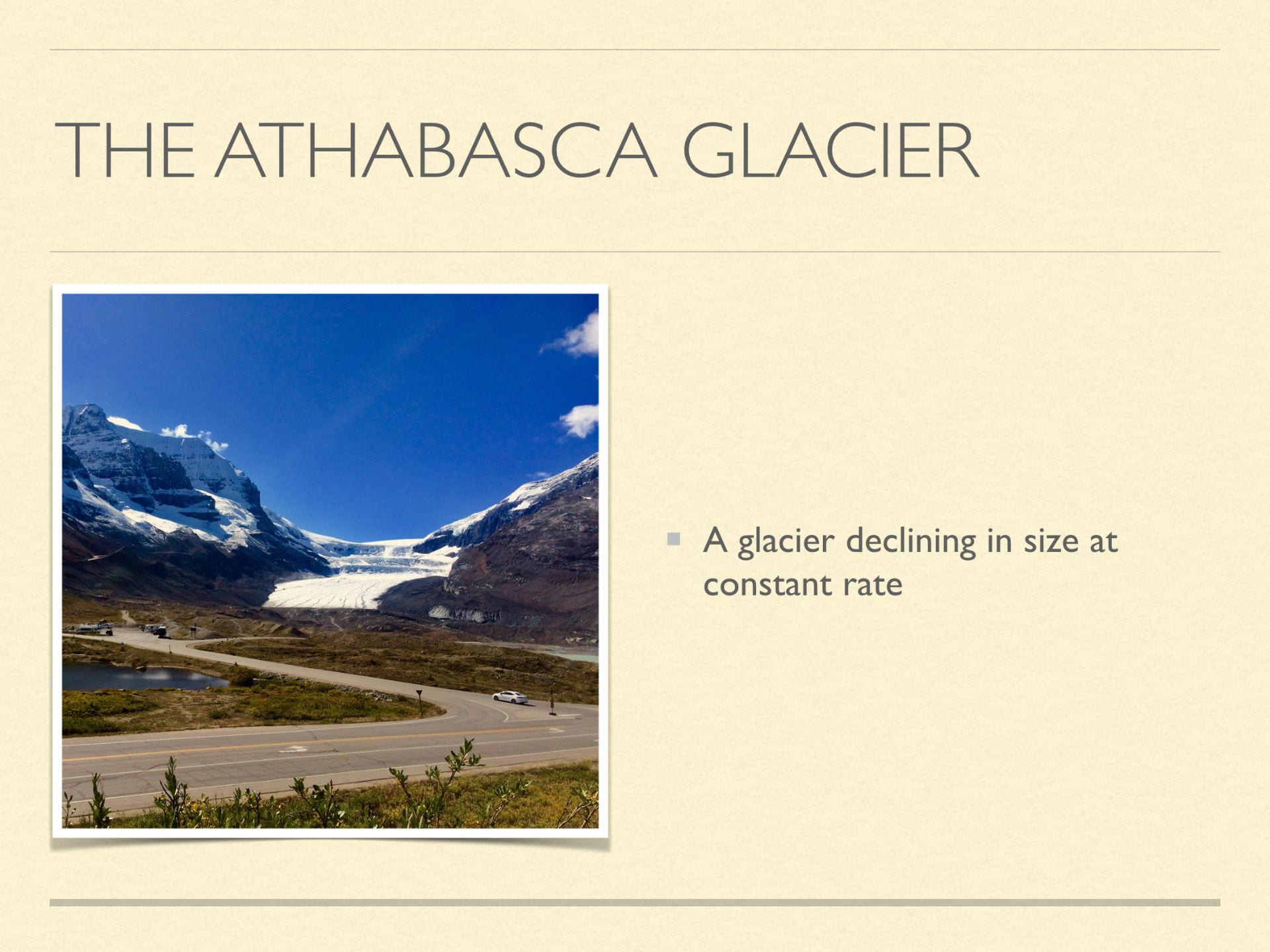
Climate change is a fact of life in today’s world. Predicting this change is an example of how we can use math to help predict how our world is going to change in the foreseeable future. In the flow like water project, we worked to predict the expansion or lack of expansion of different natural phenomena. For us, we studied the deprecation of the Athabasca glacier. We discovered it’s a constant rate of change and embarked on a journey that would uncover the amount of time that the Athabasca glacier has left if we continue at this constant rate.

Model with mathematical concepts in situational concepts
In this project, the entire basis of the project was to model these concepts in situations found in the real world. In this case, I needed to collect the data of the Athabasca glacier and convert it into a linear equation that can be applied and is understandable. It is easy to look at the graph above to see how I was able to model the future of the Athabasca glacier.

Take risks when offering an idea in the classroom
I had to take risks to ensure that I understood each of the concepts we learned. I had to challenge myself to share my ideas and thoughts during discussions so that I could better understand each concept. I also had to share with others my thoughts which meant taking risks both during lessons and outside of them.
I also had to share with others my thoughts which meant taking risks both during lessons and outside of them.
Explore, analyze and apply mathematical concepts using technology and other tools
When studying linear relationships and equations, I explored them by using technology like desmos (a graphing calculator). I was challenged to study and understand these relationships through examples and using these technologies I was able to understand them very well.
